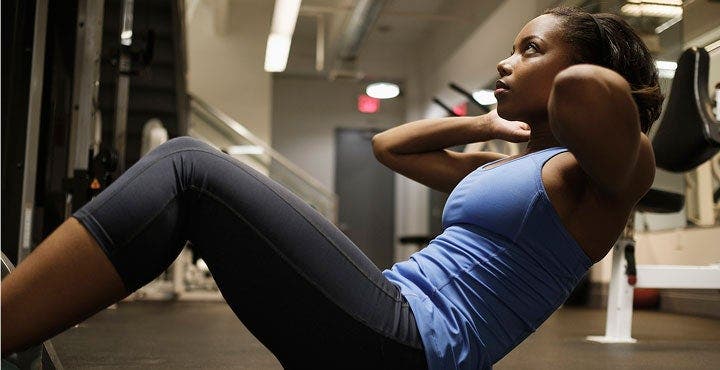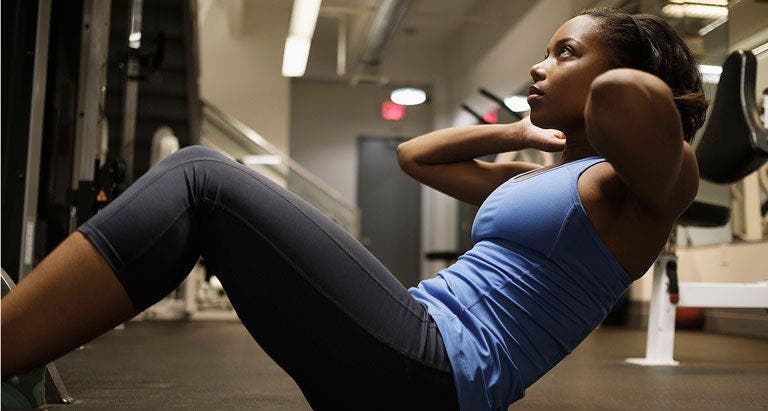Why you should work on your core (even if you don’t want a six pack)


Flat tummies might be the envy of beachgoers, but building your healthiest body starts beneath the surface. A strong core (you know, those muscles all around your midsection!) can be the ticket to looking and feeling your best, even if you don’t reach six-pack status.
Why? Since the core muscles are the closest ones to the central axis of your body, they’re key for everything from balance, stability, and movement to injury-prevention and energy.
“If the core muscles are not strong, it would be exactly the same as having no load-bearing walls in your house. The house would collapse,” says Michele Olson, PhD, an senior clinical professor of sport science and physical education at Huntingdon College in Montgomery, AL.
But what are your core muscles, exactly; why are they so important; and how can you firm up your abs in no time at all? WW asked experts on the front lines.
Core muscles 101
Think the core muscles are just those in your tummy? “Technically, the ‘core’ is not just the specific abdominal muscles,” says Holly Perkins, CSCS, the author of Lift to Get Lean. “True core control comes from the collaboration of the muscles on the front and back of your torso.”
There are four collective ab muscles:
- rectus abdominis
- transverse abdominis
- internal obliques
- external obliques
Perkins notes that the muscles of your back are also part of the core; as are hip muscles (glutes, hip flexors, inner thighs, and outer hip muscles), points out Olson.
Because the rhomboids (the two muscles on your back-shoulder area) stabilize your shoulder blades, some fitness professionals group them in when talking about the core, too, she notes.
Why is core strength important?
The benefits of strong ab muscles go far beyond looks. “When properly strengthened and activated, all human movement is generated from the core powering the body,” says Perkins.
A solid set of muscles helps us perform virtually every movement we make—standing properly, sitting properly, carrying books, purses, and gym bags; and even carrying a baby throughout pregnancy, says Olson. Need to stand on one leg to reach something high up on a shelf? That relies heavily on core strength, she notes.
In fact, a weak core all-too-often contributes to overexerting other areas of your body—such as your knees, back, hips, and shoulders—which can lead to pain, notes Perkins.
One of the most common injuries she sees in clients is pulled back muscles simply from sitting up in bed. “Your core muscles need to be strong enough to pull you upward when you sit. If they are not, your body will tug on other muscles and this is when muscle pulls, strains, and injuries occur.”
Best yet: Giving your midsection a little love might leave you with a little more energy, too. Why? “Standing and sitting are actually very strenuous activities when your muscles are not strong,” says Perkins. Without a reliable core, your body will recruit other muscles to help you throughout the day—muscles that might fatigue more quickly. “If you sit during the day, a strong core will keep your body in better alignment so that you have more energy to devote to your day.” (We’re certainly not complaining there!)
How to strengthen your core
Carving a tougher midsection doesn’t (and shouldn’t!) call for a boring routine of sit-up after sit-ups.
It can be as simple as bracing yourself throughout the day. Cultivate core consciousness by imagining someone is about to punch you in the tummy. You “brace” and contract your muscles downward and inward. “This is a very effective way to begin strengthening the core,” says Perkins. “I have my clients do it all day long, while they are driving, talking on the phone, and sitting at a desk.”
If you want to put more time and effort into strengthening these core muscles, do. “Just like acing your driver's license test back in high school, you're not going to get a strong core just by hoping for it,” says Emily Abbate, a certified personal trainer and run coach at Swerve Fitness in New York City. “Set time aside weekly to work specifically on core work.”
Try 15 minutes of body-weight or banded exercises—and a zillion crunches isn't the secret. Try these five moves as an easy way to get started.
“Instead, have fun by mixing up your routine to target all of the different muscles in your core,” says Abbate.
RELATED: How your body changes when you start weight training
